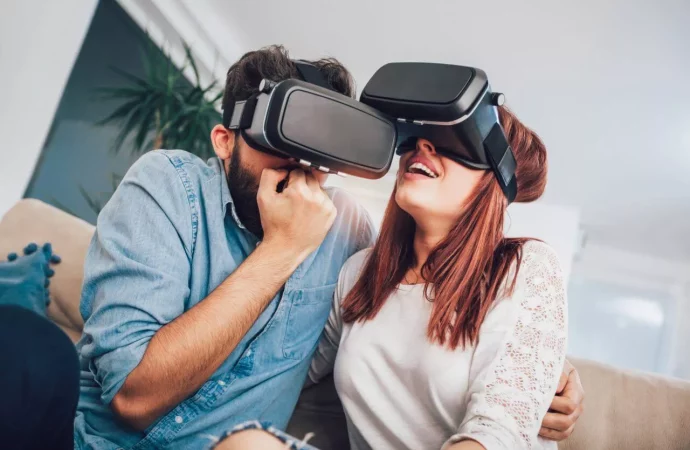Introduction Live entertainment has always been a cornerstone of cultural and social interaction. From ancient amphitheaters to modern concert halls, the experience of witnessing a live performance has captivated audiences for centuries. However, the advent of technology has revolutionized the way we experience live entertainment, bringing about unprecedented enhancements that have transformed both the production
Introduction
Live entertainment has always been a cornerstone of cultural and social interaction. From ancient amphitheaters to modern concert halls, the experience of witnessing a live performance has captivated audiences for centuries. However, the advent of technology has revolutionized the way we experience live entertainment, bringing about unprecedented enhancements that have transformed both the production and consumption of live events. This article explores the myriad ways in which technology is enhancing live entertainment experiences.
The Evolution of Live Entertainment
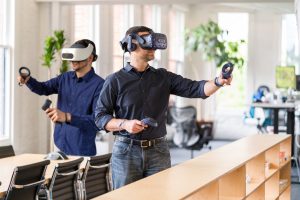
Image by: Yandex.com
- Historical Context
Live entertainment has a rich history that dates back to ancient civilizations. The Greeks and Romans held theatrical performances in grand amphitheaters, while medieval Europe saw the rise of traveling minstrels and troubadours. The 19th and 20th centuries brought about the golden age of theater and the advent of cinema, each revolutionizing the way people consumed entertainment.
- The Digital Age
The turn of the 21st century marked the beginning of the digital age, a period characterized by rapid technological advancements. The integration of technology into live entertainment has not only enhanced the quality of performances but also expanded the ways in which audiences can engage with them.
Enhancing Production Quality

Image by: Yandex.com
- Advanced Lighting and Sound Systems
One of the most significant ways technology has enhanced live entertainment is through advanced lighting and sound systems. Modern lighting technology, such as LED lights and intelligent lighting systems, allows for dynamic and customizable lighting designs. These systems can be programmed to change colors, patterns, and intensities in real-time, creating visually stunning effects that enhance the overall ambiance of a performance.
Similarly, advancements in sound technology have greatly improved the auditory experience of live events. High-definition audio systems, noise-canceling microphones, and advanced mixing consoles ensure that every note and word is heard with crystal clarity. Surround sound systems and immersive audio technologies further enhance the auditory experience, making audiences feel as if they are part of the performance.
- High-Definition Visuals
The use of high-definition visuals has become increasingly prevalent in live entertainment. Large LED screens and projection mapping technologies allow for the display of high-resolution images and videos, adding a visual dimension to performances. These technologies can be used to create stunning backdrops, display live feeds of the performance, or even incorporate interactive elements that engage the audience.
- Special Effects and Augmented Reality
Special effects have long been a staple of live entertainment, but recent advancements in technology have taken them to new heights. Pyrotechnics, smoke machines, and laser shows are now complemented by cutting-edge technologies such as augmented reality (AR) and virtual reality (VR). AR can overlay digital elements onto the real world, creating interactive and immersive experiences for the audience. For example, AR can be used to project virtual characters or objects onto the stage, interacting with live performers in real-time.
Enhancing Audience Engagement
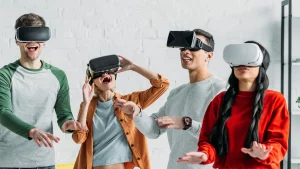
Image by: Yandex.com
- Interactive Experiences
Technology has also transformed the way audiences engage with live entertainment. Interactive experiences are becoming increasingly popular, allowing audiences to participate in performances in new and exciting ways. For example, mobile apps and wearable devices can be used to create interactive elements that respond to audience input. These technologies can be used to create real-time polls, quizzes, or even control certain aspects of the performance, such as lighting or sound effects.
- Social Media Integration
Social media has become an integral part of the live entertainment experience. Platforms such as Twitter, Instagram, and Facebook allow audiences to share their experiences in real-time, creating a sense of community and connectivity. Event organizers and performers can use social media to engage with their audience, share behind-the-scenes content, and promote upcoming events. Live streaming on social media platforms also allows audiences who are unable to attend in person to experience the performance remotely.
- Virtual and Hybrid Events
The COVID-19 pandemic has accelerated the adoption of virtual and hybrid events, where live performances are streamed online for remote audiences. Virtual events leverage technologies such as live streaming, VR, and AR to create immersive experiences that can be enjoyed from the comfort of one’s home. Hybrid events combine in-person and virtual elements, allowing audiences to choose how they wish to experience the performance. These formats have expanded the reach of live entertainment, making it accessible to a global audience.
Enhancing Accessibility
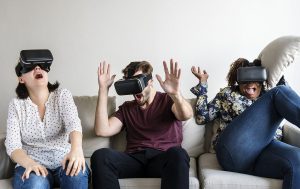
Image by: Yandex.com
- Assistive Technologies
Technology has also played a crucial role in enhancing the accessibility of live entertainment. Assistive technologies, such as closed captioning, sign language interpretation, and audio description, ensure that performances are inclusive and accessible to individuals with disabilities. These technologies can be integrated into live events to provide real-time support, allowing all audience members to fully enjoy the experience.
- Multilingual Support
In an increasingly globalized world, multilingual support has become essential for live entertainment. Translation technologies, such as real-time translation apps and multilingual subtitles, allow performances to be enjoyed by audiences who speak different languages. These technologies break down language barriers and make live entertainment more inclusive and accessible to a diverse audience.
Enhancing Safety and Security

Image by: Yandex.com
- Crowd Management
Technology has also enhanced the safety and security of live entertainment events. Advanced crowd management systems, such as facial recognition and biometric scanning, can be used to monitor and control access to events. These systems can identify potential security threats and ensure that only authorized individuals are allowed entry. Additionally, real-time monitoring systems can track crowd movements and detect potential hazards, allowing event organizers to respond quickly to any issues.
- Health and Safety Protocols
In the wake of the COVID-19 pandemic, technology has played a crucial role in implementing health and safety protocols at live events. Contactless entry systems, temperature scanning, and digital health passports are just a few examples of technologies that have been used to ensure the safety of attendees. These technologies help to minimize physical contact and reduce the risk of transmission, allowing live events to take place safely.
The Future of Live Entertainment
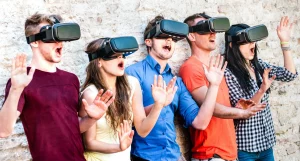
Image by: Yandex.com
- Artificial Intelligence and Machine Learning
Artificial intelligence (AI) and machine learning are poised to revolutionize live entertainment in the coming years. AI can be used to analyze audience preferences and behaviors, allowing event organizers to tailor performances to meet the needs and expectations of their audience. Machine learning algorithms can also be used to optimize various aspects of live events, such as ticket pricing, marketing strategies, and crowd management.
- Blockchain and Digital Ticketing
Blockchain technology has the potential to transform the ticketing industry by providing a secure and transparent platform for digital ticketing. Blockchain-based ticketing systems can prevent fraud and scalping by ensuring that each ticket is unique and cannot be duplicated. Additionally, these systems can provide real-time data on ticket sales and attendance, allowing event organizers to make informed decisions.
- The Metaverse
The concept of the metaverse, a virtual world where people can interact and engage with digital content, is gaining traction in the entertainment industry. The metaverse has the potential to create entirely new forms of live entertainment, where audiences can experience performances in a fully immersive virtual environment. This technology could revolutionize the way we consume live entertainment, providing endless possibilities for creativity and innovation.
Conclusion
Technology has undoubtedly enhanced live entertainment experiences in countless ways. From advanced lighting and sound systems to interactive experiences and virtual events, technology has transformed the way we produce and consume live performances. As technology continues to evolve, the possibilities for enhancing live entertainment are endless. The future of live entertainment is bright, and technology will continue to play a pivotal role in shaping the way we experience it.

